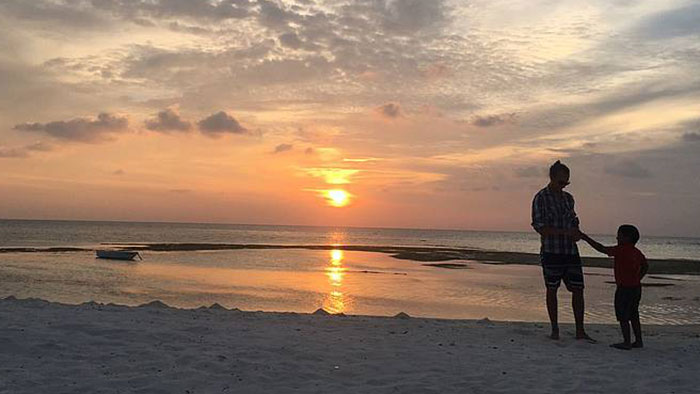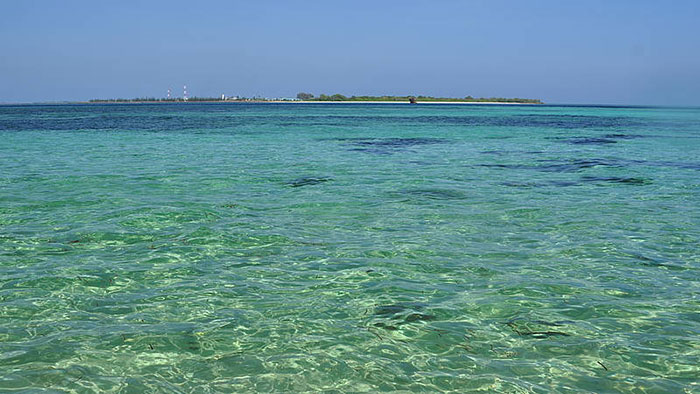The Maldives’ parallel worlds
Palm-lined beaches with sand as white as snow, crystal-clear water and romantic wooden cabins – this is the first image to come the most people’s minds when they think of the Maldives. Yet, away from holiday brochures’ with pictures of the island of your dreams, each photo more extravagant and luxurious than the next, there is a small island nation that could not be further removed from this world of opulence. During a three-month research stay in the Maldives, Sebastian Steibl had a unique opportunity to experience the “real” Maldives and, in doing so, discover a side of the islands that remains entirely hidden from most tourists.
Objective of the research stay
The aim of his research was to find out whether and to what extent various human activities impact on small (island) ecosystems. The problem with investigating such issues, however, is that it can be difficult to differentiate between the various influencing factors; as a result, the extent to which the individual factors – such as tourism or fishing – actually effect an ecosystem often remains unclear. As the Maldives are made up of around 1200 small islands which are home to either locals (and are used for fishing) or international tourist resorts, this group of islands represent an ideal open-air laboratory for Sebastian Steibl’s research, in which he can investigate these two use types effectively in geographically distinct areas. There is also a large number of uninhabited islands which served as a reference for the island ecosystem’s untouched, natural state.
Of the roughly 1200 islands that make up the Maldives, only around 200 are inhabited by the local people, the Dhivehi; a further 100 islands are used as resorts by the international tourism industry. As a result, as well as offering the ideal conditions for Steibl’s research, the island system also features an extremely strict divide that keeps the local people away from international visitors – a separation that the government of the Maldives consciously reinforces with corresponding legislation.
In the "real" Maldives, the government enforces a strict societal system based on Sunni Islam. While the resorts’ bikini-clad tourists enjoy this island paradise with cocktails in hand, the islands inhabited by the native population are subject to a strict alcohol ban and laws that force women to wear headscarves; Dhivehi women are also entirely forbidden from smoking or buying cigarettes, and there are often reports of women who are alleged to have engaged in pre-marital sex being flogged. Sebastian Steibl encountered these extreme contrasts time and again during his studies as he travelled between the islands occupied by the locals and those reserved for holidaymakers.
Grab your passport and go!
“If you want to break out of the routine of university work for once, I can only encourage you to take a research stay in a distant country, free from university structures and disconnected from Western culture. To my mind, while having to organize and manage everything yourself is considerably more demanding, it also teaches you far more than just studying or researching at a foreign university. Even though such field projects in exotic countries require more planning than ‘normal’ research stays abroad, the reward is a once-in-a-lifetime experience. Afterwards, you can look back on the completed project and say, with confidence and a clear conscience, that you completed the entire project yourself, from the initial concept through to completion.”
Text: Sebastian Steibl, Max Weber Program scholarship holder, University of Bayreuth



